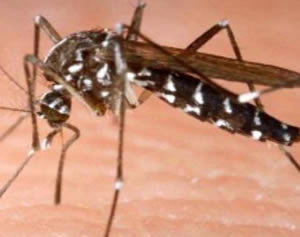Parasites and the evolution of mind changing behaviour.
The parasitic fungus Orphiocordyceps camponotibalzani is a strange alien like predator. A spore floats harmlessly through the air. However, when it encounters an ant its true nature is quickly revealed as the fungus breaks through the exoskeleton. Once inside it consumes enough of the host's tissues to weaken it but not kill it. As the fungus reaches maturity it releases chemicals into the brain of the ant that causes certain changes in behaviour. The hapless ant now makes its way to a place populated by ants, climbs a plant and attaches itself to the underside of a leaf with its jaws, just as its brain is consumed. Days later fungal reproductive structures protrude from the head of the ant, as shown on the right.
We are more familiar with fungi that devour their hosts and know little of those that are capable of controlling behaviour.
Explain how such strategies have benefited the survival of the fungus.

Taxoplasma gondii is a parasitic protozoan that infects rodents via raw meat or cat faeces. Once inside the host, the protozoan matures without causing harm. However to complete its life cycle the protozoan must find its way into the gut of a cat, a near impossible task you may think. The protozoan cleverly increases the dopamine levels in a region of the host's brain associated with fear known as the amygdala. This causes the sensation of fear to become pleasurable and the rodent now becomes reckless and more likely to be eaten by a cat.
Humans are also infected by the protozoan. Infected humans tend to show behavioural changes and have longer reaction times than humans who are not infected. It is thought that at some time in our past this made humans easier prey for wild cats and therefore the protozoan could complete its lifecycle.
Infected humans of the parasitic protzoan have slow reaction times. Why has this evolved?

A parasitic fungus of the genus Metarhizium kills malaria transmitting mosquitoes. But there is a problem. Using aggressive, fast acting strain of the fungus would lead to the evolution of resistant strains as only those individuals that tolerate fungul infection will survive and pass their genes to the next generation. Killing mosquitoes outright pitts us against evolution.
Tom Baker, from Penn State, conducted research that showed that some parasitic fungi can influence what their host feeds on. They can stop insects from biting humans by releasing chemicals that reduce the hosts ability to smell humans but not other animals, such as pigs and dogs.
By getting infected mosquitoes to feed on other animals as opposed to humans there would be no evolutionary resistance since mosquitoes could still breed normally, they would just simply have a modified diet that did not include humans.
In the eradication of the malaria carrying mosquitoe why are aggressive strains of the fungus not preffered?
Explain the statement "Killing mosquitoes outright pitts us against evolution".
How can changing the diet of the mosquitoe be a better solution than aggressively targeting and killing individuals quickly?
